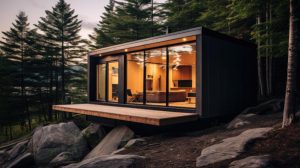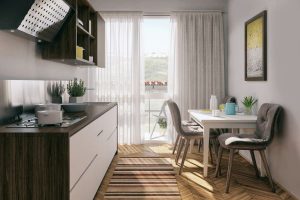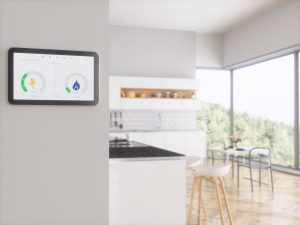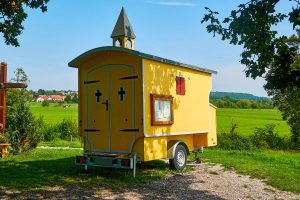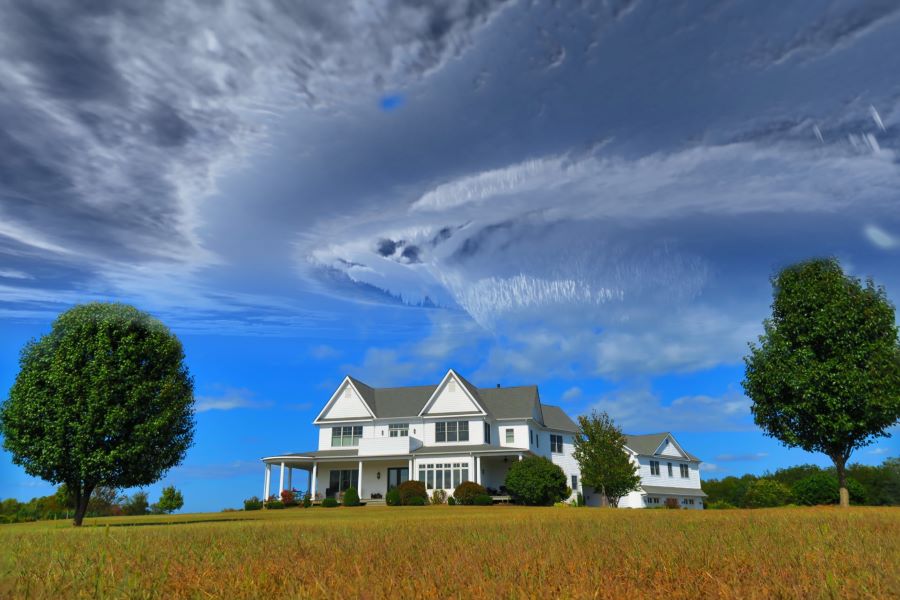
One of the misconceptions about modular homes is that they are flimsy and not as durable or resistant as site-built houses. Due to this misconception, some homeowners in regions vulnerable to extreme weather may be hesitant to build a modular home.
As with other myths about modular construction, this concern results from the common confusion of modular homes with mobile homes. Trailers are indeed more vulnerable to extreme weather because they are designed to be moved. Modular homes are not the same as mobile or “manufactured” housing however. Home owners considering building with modular construction in an extreme weather region can rest assured for a number of reasons.
Modular Homes are Permanent
Unlike mobile homes, modular homes are as permanent as site-built homes. Mobile homes are at higher risk because they are set on temporary foundations.
Modular homes, on the other hand, have permanent foundations to which they are secured, so there is no point of weakness between your home and the ground that wind or water can exploit. In fact, modular homes are indistinguishable from site-built homes of a similar design. Unless you saw the house being installed, there's no way to tell. Manufactured/mobile homes, on the other hand, are easily distinguished by the skirting hiding the foundation.
Sometimes mobile homes are permanently secured to foundations, but they are still not generally built to the same standards as site built or modular homes.
Modular Homes are Built to Code
Modular homes are built to the same standards and building codes as site-built homes. This includes earthquake proofing and any regulations that might be in place to ensure resistance to hurricanes.
In fact, because each module is built in a factory, it is easy to inspect and apply quality standards. Independent inspectors also take a look at operations. Because the home is built in a controlled environment, if extreme weather hits during construction time, materials will not be warped or damaged while stored.
Because Modules are Shipped They Need a Stronger Frame
In fact, the modules of a modular home are often tougher than site-built rooms. Each module (generally a room or two) is moved to the site on a flatbed, and has a frame that's constructed to withstand being shipped and moved on and off the flatbed. This frame generally results in slightly higher structural integrity than an equivalent site-built home. The vibration of shipping is a good test for earthquake proofing.
Basically, the modules go through quite a bit before being secured to their foundation, and that means that they have to be built more solidly. They are then secured to the foundation and each other using processes that are at least as rigorous as those used for site-built homes.
Some Modular Homes are Built Specifically to Resist Weather and Other Conditions
Because modular homes are built off-site to high standards, companies are designing homes that are specific to extreme weather conditions. For example, if you live in a place with harsh winters, you can get your home delivered with thicker walls and triple-pane windows. You can get a hurricane-resistant home, an earthquake-resistant home, etc.
In the future, modular construction may allow for interesting designs, such as round houses to resist high winds, that are not as easy to construct on site.
Modular homes should not be confused with mobile or manufactured homes, and you can set aside the "tornado in the trailer park" image. Instead, modular homes are built to the same code as site-built homes and the factory construction process can, in fact, make them even tougher.
Learn More About the Benefits of Modular Homes
Pros and Cons of Modular Homes
The pros of modular homes include lower costs over traditional construction methods, better quality, improved construction speed, and better resilience while the cons consist of a bit more complicated financing process, lack of customization, and the social stigma that is the consequence of the low-quality of modular homes in the past. In this article, we…
More Than Ever, The Modular Future is Now
In 2007, the United States faced a housing crisis that caused the Great Recession and had economic ramifications for years. Some people called it the subprime mortgage crisis. One cause of the crisis is that lenders gave loans to potential homeowners even if the buyers couldn’t afford them.
Is Modular Housing the Solution to the Housing Crisis?
In 2007, the United States faced a housing crisis that caused the Great Recession and had economic ramifications for years. Some people called it the subprime mortgage crisis. One cause of the crisis is that lenders gave loans to potential homeowners even if the buyers couldn’t afford them.
Creating Affordable Energy-Efficient Housing Through Modular Building
It feels like everyone — consumers and contractors alike — is looking for ways to improve their homes’ energy efficiency. Thanks to climate change, dangerously hot summers and brutally cold winters make it more challenging to keep structure interiors comfortable.
Ways a Modular Home Can Save You Money
Are modular homes cheaper than site built homes? Why are modular homes cheaper than site built homes?
What’s in a Name? Modular, Manufactured, Prefab, Offsite?
What is the difference between modular homes, manufactured homes, prefab homes, and homes built offsite?
Latest Modular Design Trends
What are the latest modular design trends? What trends are on the horizon?
Why Tiny Houses are NOT Modular Homes…Yet.
Are tiny homes the same thing as modular homes? What is the difference in a tiny home and a modular home?
